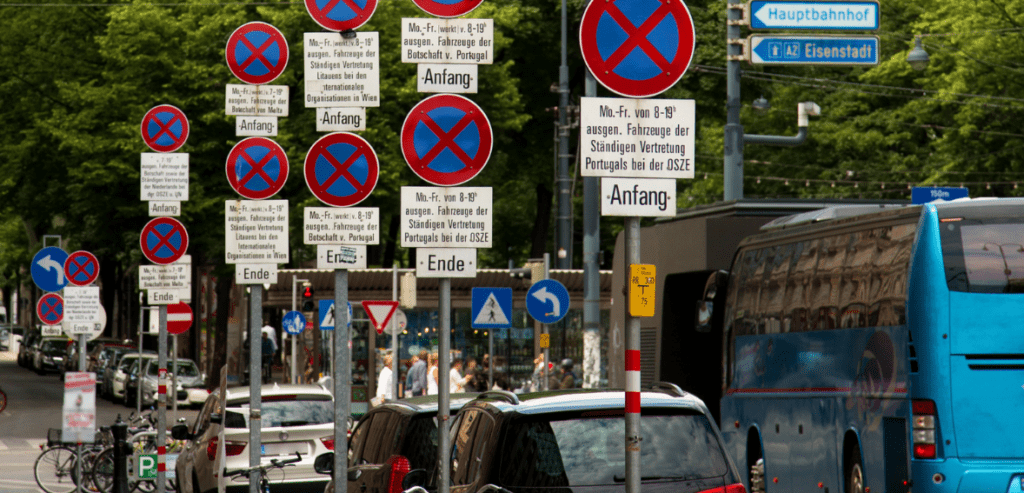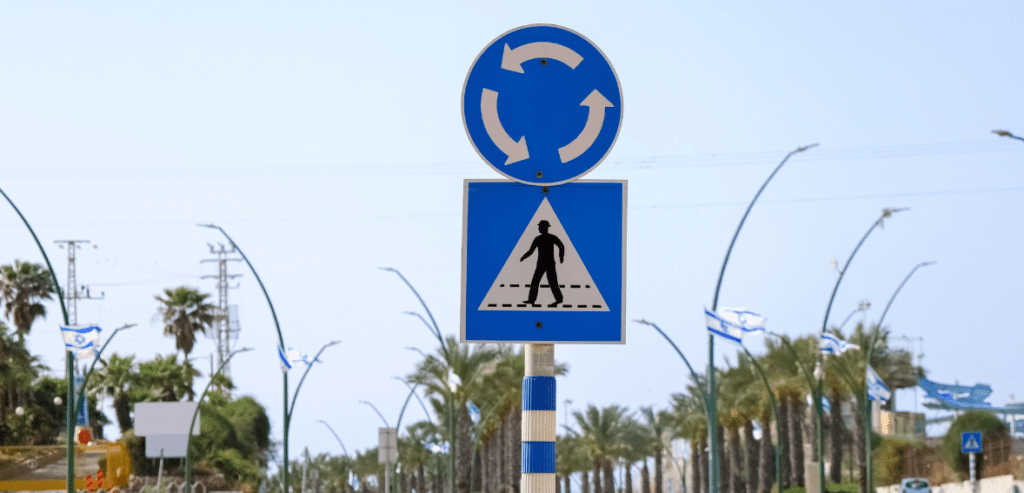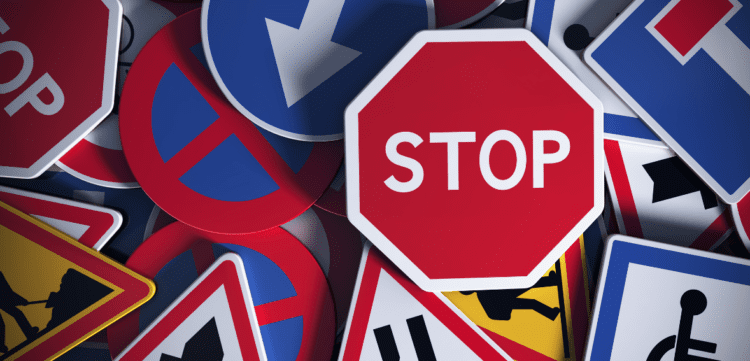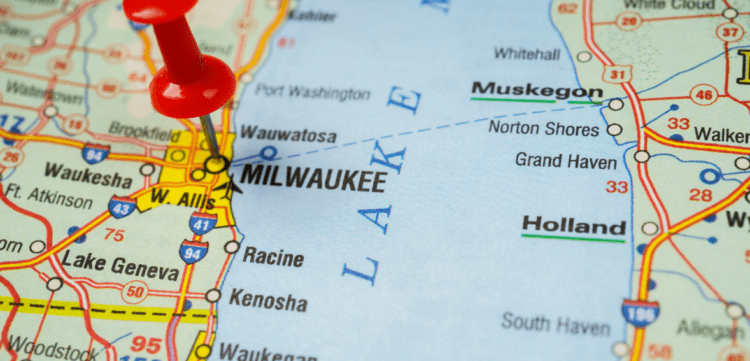Navigating through different countries, one can’t help but notice the variations in road signs. Despite the seeming uniformity brought about by international agreements like the 1968 Vienna Convention on Road Signs and Signals, significant differences remain. This article dives into the nuances of road sign systems across various regions, highlighting their unique characteristics and the implications for international drivers.
The Vienna Convention on Road Signs and Signals: A Comprehensive Framework for Global Standardization

The Vienna Convention on Road Signs and Signals stands as a pivotal structure in the realm of traffic management, aimed at unifying road sign systems across the globe to bolster road safety and streamline international vehicular movement. This convention, which has been widely adopted by a multitude of countries throughout Europe and parts of Asia, is designed to foster uniformity in road signage, thereby making the signs easily recognizable and interpretable regardless of national borders. Such standardization is essential not only for enhancing road safety but also for reducing vehicular accidents and facilitating efficient cross-border transportation.
Countries such as Albania, Germany, Turkey, and Russia are among the many that have embraced the Vienna Convention’s protocols. Each of these nations integrates the prescribed standards with their particular cultural and linguistic idiosyncrasies. For example, while the core symbols and designs of the signs are aligned with the international guidelines stipulated by the Vienna Convention, the textual elements are adapted to include local languages. This adaptation ensures that while the signs are universally standard in appearance, they remain locally comprehensible, which is crucial for ensuring that both residents and foreign drivers understand and adhere to the traffic rules.
The implementation of the Vienna Convention extends beyond mere traffic management. It also includes guidelines for road signs related to tourist information, which are especially useful for international visitors navigating unfamiliar routes. By standardizing these signs, the convention facilitates a more intuitive navigation experience for all drivers, thereby reducing the likelihood of road mishaps linked to confusion or misinterpretation of road signs.
For individuals interested in further detailed study on this subject, resources such as “Road Signs and Meanings (PDF, UK, DMV, Australia)” offer an in-depth look at how various countries conform to or deviate from the Vienna Convention’s standards. These resources are crucial for those looking to understand the detailed specifications of road sign systems and their impact on both local and international traffic laws. Such comprehensive materials shine a light on the balance between universal road sign conventions and the specific adjustments made by individual countries to address their unique traffic and cultural conditions.
Divergences in European Road Signs
The Vienna Convention on Road Signs and Signals has facilitated a considerable degree of uniformity in traffic signs across Europe. However, significant divergences remain, especially in aspects such as graphic design, color-coding, and linguistic nuances. These variations are not just trivial; they hold substantial implications for road safety and the ease of navigation for international drivers.
In France, motorway signs are notably distinguished by their blue backgrounds, a choice that aligns with the country’s aesthetic and functional preferences for road signage. Contrastingly, Switzerland employs green backgrounds for similar signs. This color differentiation not only enhances local identity but also influences the visual emphasis and recognition speed of signs, which can be crucial for driver decision-making at high speeds.
Further north in Ireland, the approach to warning signs is uniquely characterized by the use of yellow diamond-shaped signs. This is in stark contrast to the predominant style across other European nations, where warning signs typically feature either white backgrounds with black symbols or yellow backgrounds with red borders, and are triangular in shape. Ireland’s distinctive choice enhances visibility and immediate recognition, which is vital for conveying urgent traffic warnings.
These national differences in road sign systems, while appearing minor, are significant in their potential impact on drivers who frequently cross borders. The adjustments in sign designs, colors, and formats can lead to moments of confusion and adjustment, which, in high-speed driving conditions, could translate to safety risks.
For international drivers and enthusiasts who seek a deeper understanding of these variations, a resource like “Road Signs and Meanings (PDF, UK, DMV, Australia)” can provide comprehensive insights into how different countries design and implement their road signage systems, reflecting both universal standards and local adaptations. This knowledge is not only crucial for understanding regulatory differences but also for enhancing safety and predictability on diverse road systems.
Road Signs and Meanings (PDF, UK, DMV, Australia): A Closer Look
In the United Kingdom, road signs are uniquely designed to cater to both local and international drivers by including measurements in both the metric and imperial systems. This dual-measurement approach facilitates understanding for a diverse array of drivers, enhancing navigation and safety on the roads. The signs themselves are characterized by a mix of vivid colors and distinct shapes that help in quick recognition and comprehension.
Similarly, Australia’s road signage system takes into consideration its unique environmental and traffic conditions by incorporating symbols that depict local wildlife, such as kangaroos and koalas, which are prevalent along highways and rural roads. The design and placement of these signs are strategically planned to prevent accidents and improve traffic flow, reflecting Australia’s commitment to road safety and wildlife preservation.
In the United States, the Department of Motor Vehicles (DMV) provides extensive resources for drivers, including downloadable PDF guides that detail the meanings and implications of different road signs. These resources are particularly valuable for new drivers and international visitors, helping them to familiarize themselves with the nuances of U.S. road sign systems. These guides are meticulously structured to ensure they cover the wide variety of signs encountered on American roads, from regulatory to warning signs.
Overall, the “Road Signs and Meanings (PDF, UK, DMV, Australia)” resources and systems reflect a deep consideration of local requirements and international standards, aiming to foster a safe and efficient driving environment. Each country’s approach to road signage not only aids in immediate navigational needs but also plays a crucial role in broader traffic management and accident prevention strategies.
Graphical and Typographical Differences

The design and typography of road signs exhibit significant variations across different countries, reflecting diverse aesthetic preferences and practical considerations:
Fonts and Arrows:
The choice of fonts and arrow designs on road signs can greatly influence their readability and effectiveness. In some nations, road signs feature bold, heavy fonts that stand out against various backdrops and weather conditions. These fonts are often chosen for their clarity and ease of recognition from a distance. Conversely, other countries might prefer more streamlined, modern typefaces that blend aesthetic appeal with functional visibility. Additionally, the orientation and style of arrows used for directional purposes vary, with some signs displaying sharp, angular arrows and others opting for curved or more fluid designs. These elements are crucial for guiding drivers and ensuring smooth traffic flow.
Symbolic Differences:
Road signs also differ in their use of pictograms, which communicate information about pedestrians, vehicle types, and road conditions through universally recognizable symbols. However, each country adapts its symbols to best resonate with local drivers’ familiarity and expectations. For example, pedestrian crossing signs might depict figures in motion styles that are culturally specific or more easily understood by local populations.
Regional Examples:
- Scandinavian Countries: Here, road signs often use a robust, block-like font, specifically designed to be easily readable in heavy snow and overcast weather, which are common in these regions. The substantial weight of the font ensures that it stands out against snowy backgrounds, enhancing both safety and navigability during harsh winters.
- Mediterranean Countries: In contrast, countries in the Mediterranean region tend to use more stylized, artistic fonts on their road signs. These typefaces are typically lighter and may incorporate unique design elements that reflect the local culture and aesthetic preferences. The choice of such fonts, while visually appealing, also maintains a level of clarity needed for effective road sign communication in the typically clearer, brighter conditions of these areas.
These differences in road sign design and typography not only cater to the environmental needs and cultural contexts of each region but also enhance the overall effectiveness of road communication systems.
Regulatory Significance and Local Adaptations of Road Signs
Road signs are not merely functional; they encapsulate the legal and cultural nuances of driving in different countries. These signs must often convey complex information quickly and clearly to drivers who may come from varied linguistic and cultural backgrounds. This section delves deeper into how Japan and Brazil adapt their road signage systems to address unique local challenges and driving conditions.
Japan: Detailed Pictograms for Urban Complexity
In Japan, the road sign system is designed to manage the densely populated urban areas and intricate roadway layouts that characterize much of the country. Japanese road signs use detailed pictograms that are effective at conveying information rapidly to drivers. These pictograms are crucial in cities like Tokyo and Osaka, where drivers must navigate a maze of narrow streets, frequent intersections, and multilayered expressways.
The use of pictograms in Japan also helps bridge language barriers in a country where many visitors may not speak Japanese. These signs include detailed images that illustrate driving rules and directions, effectively guiding both local and international drivers. For example, signs at intersections often include small, detailed diagrams showing permissible lane movements, which is essential for preventing confusion and maintaining the flow of traffic in high-density areas.
Brazil: Signs Tailored for Environmental Challenges
Brazil’s approach to road signage includes considerations for the country’s diverse environmental conditions, particularly in regions prone to natural hazards. During the rainy season, certain areas of Brazil, especially those in mountainous regions, are susceptible to flooding and landslides. In response, Brazilian road authorities deploy additional signage to warn drivers of these potential dangers.
These signs are not only more frequent but also more descriptive, providing crucial information that can prevent accidents during adverse weather conditions. For instance, signs warning of landslide-prone areas are common along highways that cut through the mountains, advising drivers to exercise increased caution or even to avoid certain routes during heavy rains. This proactive approach in signage reflects an adaptation to the local climate and topographical challenges, ensuring that drivers are forewarned about possible hazards.
Through these adaptations, both Japan and Brazil demonstrate how road sign systems can be tailored to meet specific regulatory needs and local driving conditions, enhancing safety and efficiency on the roads.
Impact of Cultural and Environmental Factors

Cultural influences and environmental conditions significantly impact the design and implementation of road sign systems around the world, ensuring that they cater to local needs while also accommodating international visitors. Here’s a closer look at how these factors influence road signs in specific regions:
In the Middle East, the diversity of languages spoken by both the local population and international visitors necessitates bilingual road signs. These signs typically feature Arabic, the predominant language across the region, alongside English, which is commonly understood by international travelers. This bilingual approach not only helps in navigating urban and rural areas more effectively but also enhances safety by ensuring that non-Arabic speaking drivers can understand crucial information about road conditions, directions, and regulations.
Canada’s approach to road signage reflects its commitment to cultural inclusiveness and linguistic diversity. As a bilingual country where both English and French are official languages, road signs in Canada are displayed in both languages. This practice is particularly prominent in provinces like Quebec, where French is the predominant language, and in areas with a significant Francophone population. The dual-language signs support effective communication with all drivers, promoting both understanding and compliance with traffic laws across diverse linguistic groups.
These examples illustrate how cultural backgrounds and environmental contexts shape road sign systems to address specific local requirements while promoting accessibility and safety for all road users.
Technological Integration in Road Sign Systems
As the world moves further into the digital age, the integration of technology into road sign systems presents a significant evolution in how traffic information is communicated to drivers. This section explores how various countries are incorporating advanced technologies into their road signage to enhance safety, efficiency, and real-time responsiveness.
Digital Dynamic Signage
Digital dynamic signage represents a major advancement in road sign technology. Unlike static signs, these digital displays can change their messages based on current traffic conditions, weather, and time of day. This adaptability provides real-time information to drivers, greatly enhancing road safety and traffic flow.
United States and Europe:
In the United States, digital signs are prevalent on highways and in urban areas, providing updates on traffic congestion, accidents, and weather conditions. Similarly, many European countries utilize digital signage on their motorways to inform drivers of speed limits changes due to weather conditions or traffic volume.
Singapore:
Singapore has taken digital signage a step further by integrating it with traffic management systems to control the flow of vehicles. This helps in managing congestion effectively, especially during peak hours or in the event of an incident on the road.
Smart Road Signs
Smart road signs go beyond displaying information; they interact with vehicles and traffic management centers. These signs are equipped with sensors and connectivity technology to be part of a broader smart transportation network.
Sweden:
Sweden has been testing smart road signs that communicate directly with vehicles. For instance, if a vehicle is approaching too fast, the sign can send a signal to the car, potentially triggering onboard safety features like automatic braking.
Japan:
In Japan, smart road signs are used to enhance safety in areas prone to natural disasters. These signs receive inputs from weather stations and seismic monitors, automatically updating their displays to warn drivers of hazards like tsunamis or landslides immediately.
Augmented Reality (AR) Road Signs
Augmented reality (AR) in road signs is a cutting-edge development that overlays digital information onto the driver’s view of the real world, usually through a vehicle’s windshield or a special display.
Germany:
In Germany, research is underway to integrate AR with road signs, allowing for signs to appear directly on the windshield of a car. This technology can highlight directions, speed limits, or warnings without the driver needing to look away from the road.
South Korea:
South Korea has implemented AR in special tourist areas, where drivers can see historical facts and tourist information about landmarks as they approach them, without obstructing their view of the road.
Conclusion
While international conventions attempt to standardize road signs, local adaptations remain prevalent, driven by linguistic, cultural, and environmental factors. Understanding these differences is crucial for enhancing road safety and ensuring effective navigation for all road users. As global travel resumes and international road trips become more common, appreciating these subtle yet significant differences in road sign systems can greatly enhance the driving experience and safety.
Frequently Asked Questions:
What is the Vienna Convention on Road Signs and Signals?
The Vienna Convention on Road Signs and Signals is an international treaty designed to standardize road signs, signals, and markings worldwide. Adopted in 1968, it aims to enhance road safety and facilitate international road traffic by making road signs easily recognizable and understandable across different countries.
Why do road signs differ from one country to another despite the Vienna Convention?
While the Vienna Convention provides a framework for uniformity, countries still adapt their road signs to accommodate local languages, cultural nuances, environmental factors, and specific traffic regulations. These adaptations ensure that the signs meet local needs while remaining as consistent as possible with international standards.
How do environmental factors influence road sign designs?
Environmental conditions such as weather, lighting, and landscape can significantly influence road sign designs. For instance, countries with frequent heavy snow may use larger, more durable signs with high-contrast colors for better visibility. Similarly, tropical regions might use materials and text that are resistant to fading from sun exposure and humidity.
What technological advancements are being integrated into road signs?
Technological advancements in road signs include digital dynamic signage, smart road signs, and augmented reality (AR). Digital signs can change messages based on real-time traffic and weather conditions. Smart signs interact with vehicles and traffic systems to enhance safety and efficiency. AR signs overlay digital information directly onto the driver’s view, providing real-time navigational aids without distracting from the road. These technologies aim to improve communication, safety, and navigation for drivers in various conditions.
No related posts.













